High spam rates can lead to lower open rates, lower conversions, and even getting your email banned—meaning less money for your business.
That’s why we created this 15-point checklist to improve your email deliverability, get your emails in the inbox, and make more sales. Let’s dive in!
Note: This checklist assumes you’re using an email service provider (ESP) like Sumo, MailChimp, ConvertKit, etc. If you’re sending from a personal email, these steps will still help, but you might be dealing with a separate issue.
-
15 Reasons Why Your Emails Might Be Going To Spam
%(tableofcontents)
About The CAN-SPAM Act
I want to start with the CAN-SPAM Act because it’s the most common reason for emails ending up in the spam folder. Plus, if you don’t follow it, you can be fined up to $40,000 or more. Probably not something you want.
If you aren’t familiar with it, the FTC (United States) has an excellent short guide that explains what you can and can’t do.
But here are the seven main points:[*]
-
Don’t use false or misleading header information.
-
Don’t use deceptive subject lines.
-
Identify the message as an ad.
-
Tell recipients where you’re located.
-
Tell recipients how to opt out of receiving future email from you.
-
Honor opt-out requests promptly.
-
Monitor what others are doing on your behalf.
We’re going to cover all these and more in our checklist.
Note: The CAN-SPAM Act only affects sending to internet users in the U.S. Other areas have different laws, such as GDPR in Europe. However, if you follow everything in this checklist, you should end up abiding by all these laws — read the full GDPR act to make sure.[*]
15 Reasons Why Your Emails Might Be Going To Spam
You can follow each of these points one by one, or click the button below to download our simple spreadsheet checklist for convenience.
Get Our 15-Point Email Deliverability Checklist
1. You Didn’t Get Permission To Email Them
According to the new GDPR laws, you absolutely must get permission to email your subscribers.
This means you can’t buy an email list and start sending emails to them. It’s illegal and unethical.
There are other reasons buying a list is a bad idea (like getting lots of fake, old, or bogus email addresses), so this is a no-go.
But this also applies to anyone who opted into your list through your site.
Even if you captured their email on your site, you may still not have their permission, depending on your opt-in form wording and if they’re an EU citizen.
For example, if you offer a content upgrade in exchange for an EU citizen's email information, but don’t explicitly say they need to subscribe to get it, you technically don’t have permission to continue to email them under GDPR.
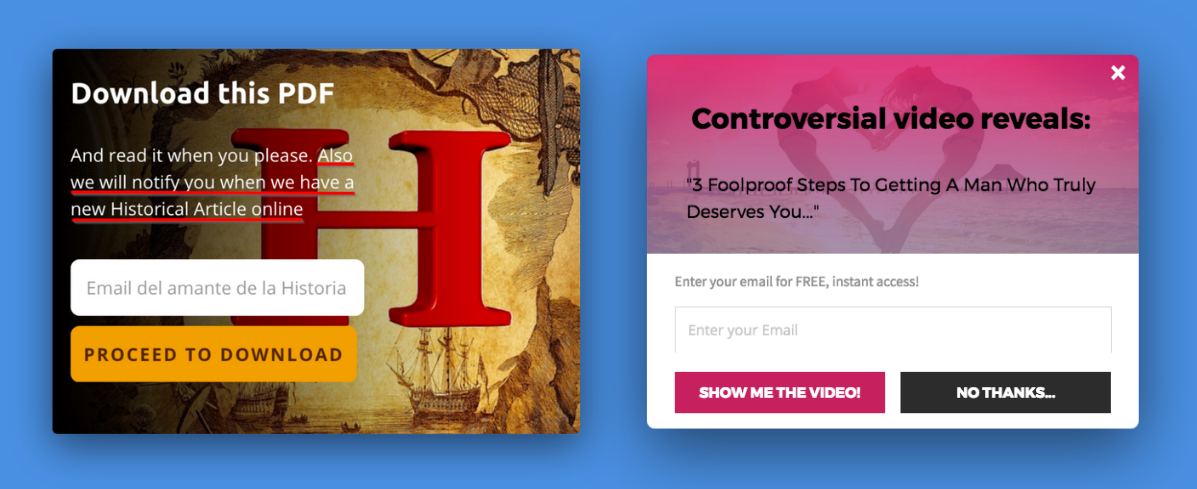
On the left, we have the History Channel’s opt-in which not only converts at an amazing 92% but explicitly gets permission to send further emails. The opt-in on the right is not only bad (they use the big, bold headline to say basically nothing), but it also doesn’t get explicit consent.
In the U.S. and outside the EU, if you don’t get your subscribers explicit consent to continue emailing them on the opt-in form, it’s good practice to let them know what future emails to expect in the first email. And give them an easy way to opt-out if they don’t want to get any future emails from you, to abide by CAN-SPAM laws.
Here’s an example of an email we send to people who subscribe to content upgrades on the Sumo blog:
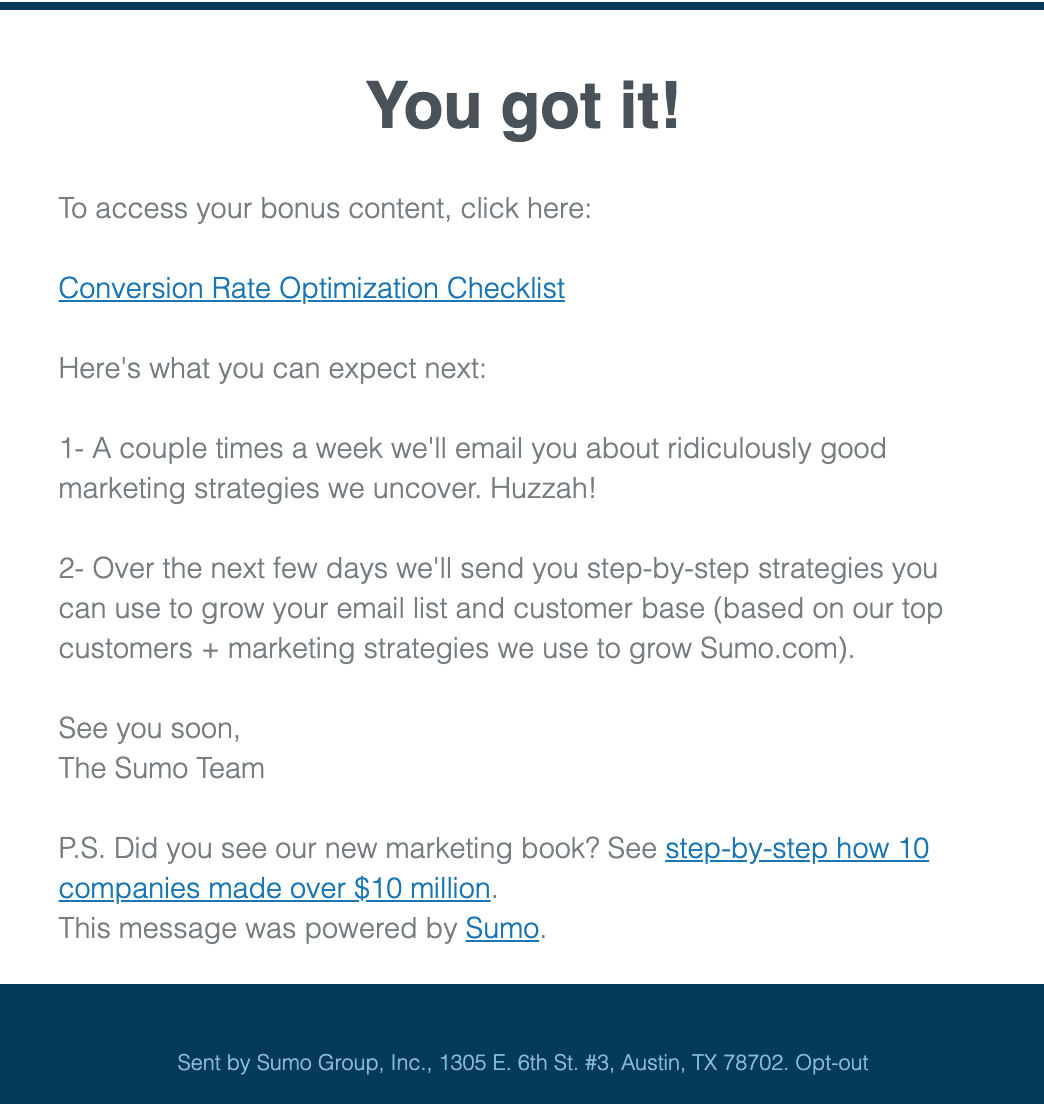
2. Your Open Rates Suck
Assuming you have permission to email your subscribers, the next thing to check is your open rates. Abnormally low open rates can trigger spam filters.
The average open rate across all industries is 20.81%, according to hundreds of millions of email campaign analyzed by MailChimp.[*]

An abnormally low open rate, depending on your industry, would be around 0-10%. Anything under 10% should worry you and may potentially warrant cleaning your list. But if you follow the advice in this checklist, improving your open rate is part of the process, so you don’t need to do anything in this step.
3. You Haven’t Sent Anything In A While
One reason for a poor open rate is your subscribers forgot who you are, so they deleted your email or reported it as spam.
That’s what happens when you build up an email list passively with opt-in forms, don’t send them anything for a few months or a year, then decide to start emailing. (We’ve probably all done this at some point. I know I have!)
If that’s the case for you, you should probably clean your list.
First, run your email list through a tool like DataValidation or EmailListVerify. This will remove old, inactive, or fake email addresses.
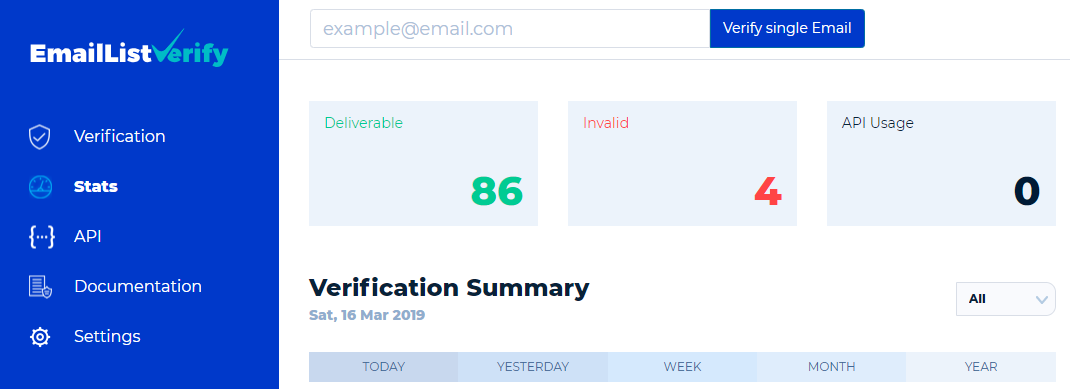
Next, send an email asking your list if they still want to receive emails. This will significantly reduce your email list, but it will ensure higher open rates and that you’re not sending to anyone who doesn’t want your emails.
To keep as many email addresses as possible, make sure you remind them of why they’re on your list and the benefit they get from your emails.
Here’s an example:
Subject: Do you still want [benefit]?
“Hey, [name]!
[Name] here from [company]! I’m emailing you because you [signed up for our opt-in/newsletter] and we haven’t sent you anything in a while.
Sorry about that! We’ve been busy [improving our product, whatever].
Do you still want [benefit of being on your email list (such as “better Google rankings”)]?
If so, just click this link (send to a thank-you page) so we know to keep sending you emails! Otherwise, click here to unsubscribe (unsubscribe link) and stop learning all our cool tips and tricks.
Here’s hoping this isn’t the last time we talk!
Cheers,
[Name]”
I mentioned a thank-you page in that email. This could be as simple as a page that says “Thank you! You’ll hear from us soon.” But if you want to squeeze more out of it, I recommend using it as a sort of reintroduction to your brand and what you do.
Talk about what to expect (when you’ll send emails), how to keep in touch (social media channels), and even include some links to your best blog posts, videos, or products. This will help improve your email engagement, and thus lower spam rates.
Note: If people don’t click the thank-you page link OR the unsubscribe link, I would send one more follow-up email after a week or so with the same links. If they still don’t click either, simply remove them from your list.
4. You’re Using Spam Trigger Keywords
The quickest way to the spam folder is by using spam trigger words, like “free”, “lowest price”, “buy”, etc.
I’m not saying using one or two of these words will get an email flagged for spam. But using too many too often certainly will.
Check out Automational’s list of hundreds of spam words to see if you’re using any.[*]
The easiest way to check against that list is to use the find function (Control or Command + F) search for any keywords you’re unsure about.
Alternatively, you can run your emails through a spam check tool like mail-tester to see how your email fares before hitting “send”.[*]
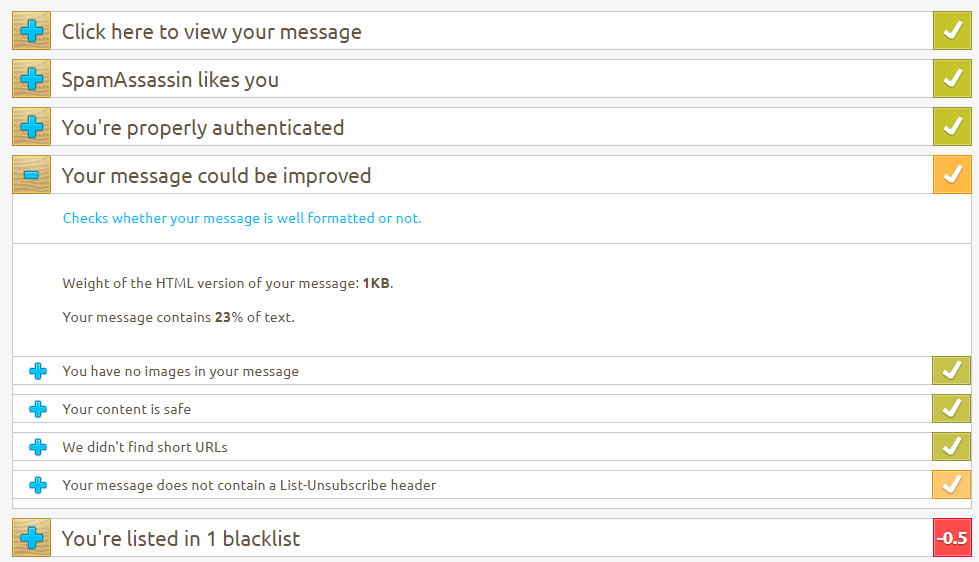
It will give you a score out of 10 (10 being the best) as well as a line-by-line checklist to improve your deliverability.
5. You Used A Big Image With Little Or No Text
Another thing that flags spam is a big image with little or no text. You might think, “But I’ve seen tons of emails with lots of images and little or no text!”
That’s because images only increase the likelihood emails end up in spam but they don’t guarantee it. Think of spam filters as a sliding scale. Each item on your email that triggers spam (like big images with little or no text, spam words, and low open rates) increases the chance they'll end up in spam.
For example, this email had a bunch of images and went to my spam folder:
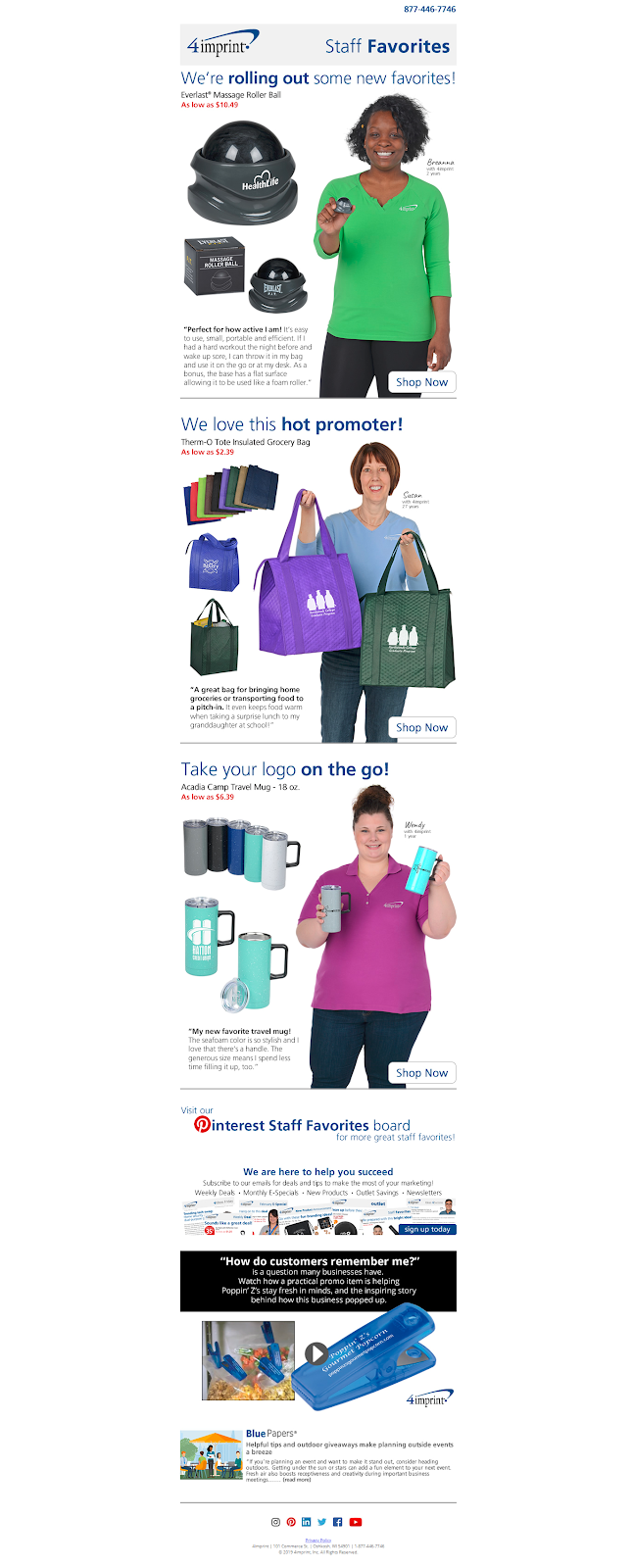
Whereas this email from Sumo uses an image with plenty of surrounding text to avoid being sent to spam:
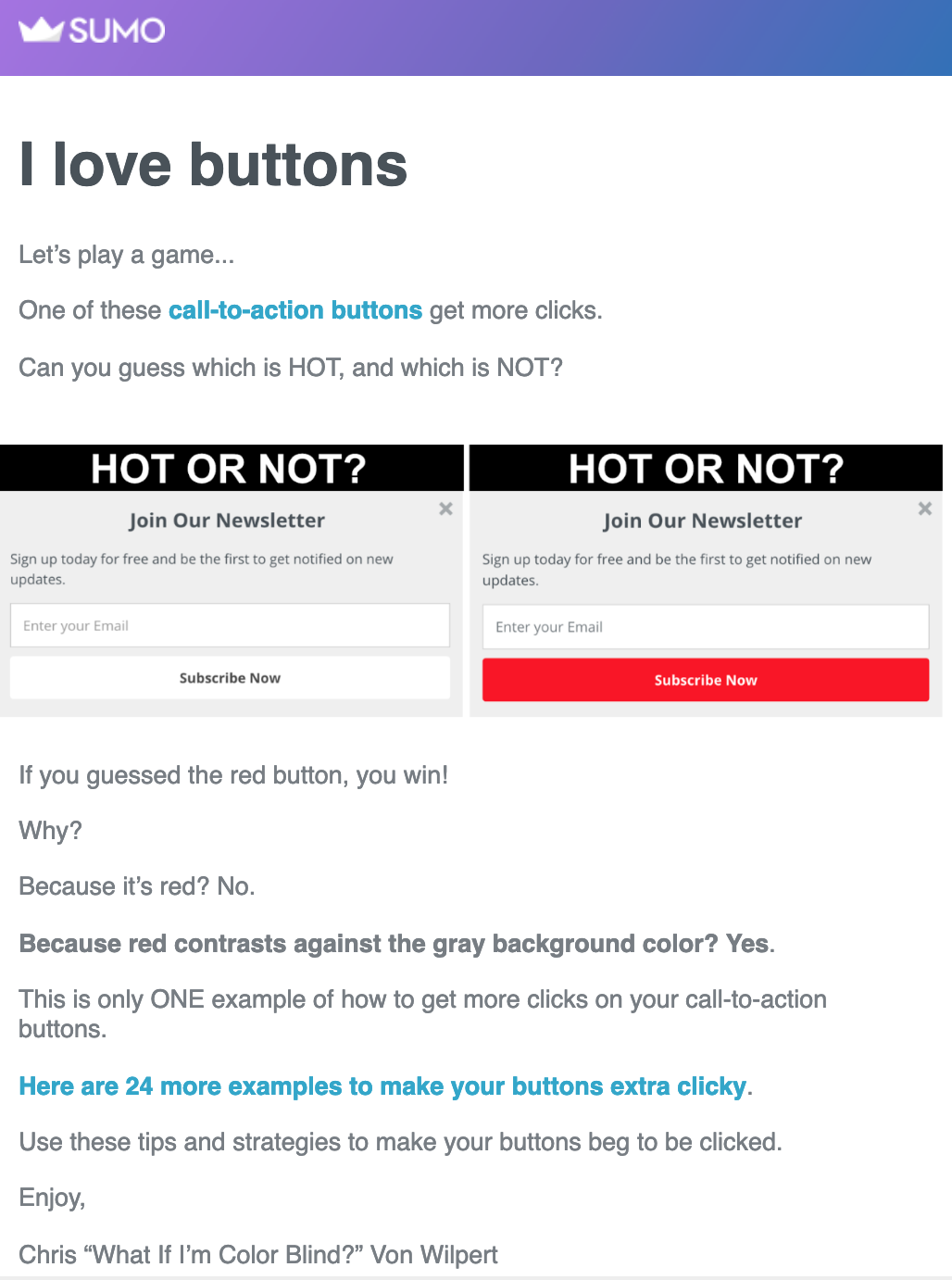
Moral of the story? If you can avoid using a big image, do so. But don’t feel like you need to do it if the image is important for your conversion rates. (That’s why it’s important to A/B test your emails.)
6. Your Subject Line Is Misleading
One of the biggest reasons for low open rates (and thus, ending up in the spam folder) is bad subject lines.
Your subject lines can make or break your email campaigns.
The best email subject lines have these things in common:
-
They are relevant to what your subscriber signed up for.
-
They pique the subscriber's curiosity.
-
They don’t sound like spam.
Here’s a good example from an email Sumo sent to a list of 41k people who signed up for email marketing tips. It got a 35.25% open rate because it was hyper-relevant to the people on the list.
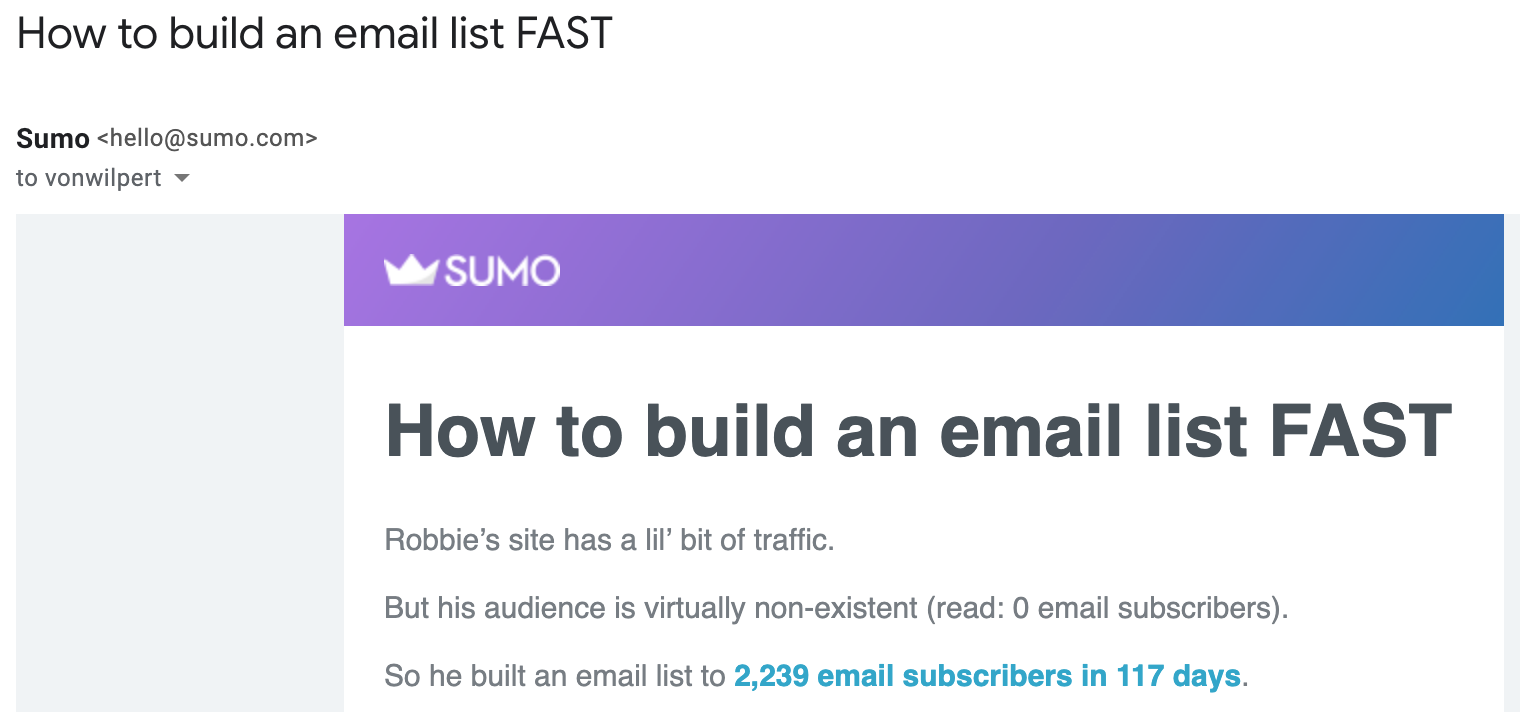
One of the best ways to pique curiosity is by saying something controversial or hard to believe. However, you also shouldn’t say anything misleading or incorrect.
For example, using:
-
“RE:” when they didn’t send you a message.
-
“Urgent:” when it’s not urgent.
-
“About your order” when they didn’t buy anything from you.
Not only are these unethical and spammy, they’re also against CAN-SPAM. So don’t do it!
7. You’re Sending To Old, Inactive Or Bogus Email Addresses
If you haven’t sent an email in a while, if you bought an email list, or if some of your opt-ins used a bogus email, you may be sending to unused or inactive email accounts.
Obviously, this will hurt your open rate and increase the chance of a spam flag.
The solution here is to clean your list after email list verification. If you didn't do so in step three, run your email list through a tool like DataValidation or EmailListVerify before you send any more emails.
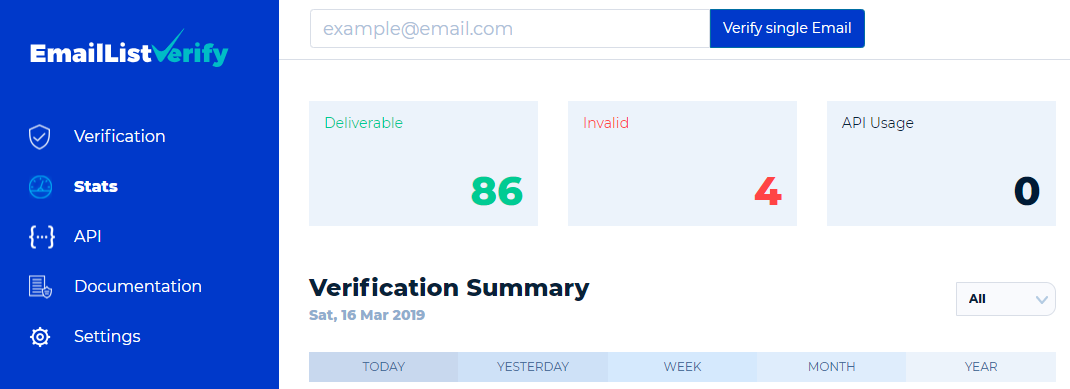
And of course, don’t buy email lists. But you already know that!
Note: Another reason you may end up in spam filters is having a spam trap email on your list. These email addresses are used to expose illegitimate senders who add email addresses to their lists without permission. But they can accidentally end up on your list if you had an attack from a competitor or if you bought a list.
If you run your list through a validation tool, it should catch these. But you may need to contact your ESP to get the sending issues resolved if you’ve already sent to the spam trap and it’s hurting your deliverability.
8. You Included Attachments
This one is simple. Attachments are a big red flag for spam filters.
If possible, avoid sending attachments. Instead, upload the attachment to a service like Google Drive or Dropbox and send a link to the download. Or host the document on your website and let people download it there.
Here’s an example of how to do it, where the download has been uploaded to Amazon S3 first, then linked in the email:
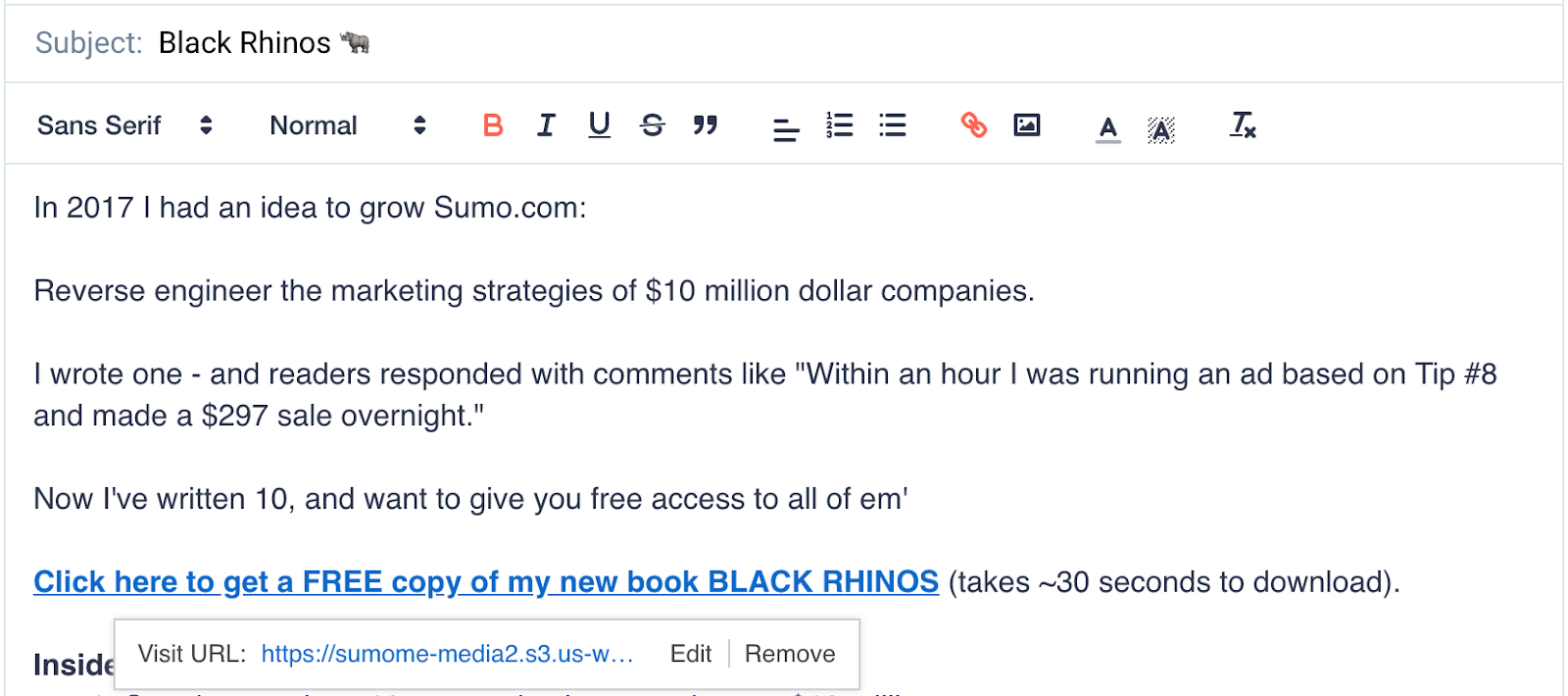
9. Your “From” Information Is Wrong
If your “From” information (name, email address, and reply-to email address) is incorrect, you’re going against the CAN-SPAM act. So double-check that your sender information is correct right now. Simple!
For example, you might use any combination of the following to avoid having false or misleading header information:
-
personal name
-
business name
-
personal name, business name
-
full name initials
-
company initials
Inside Sumo, it’s easy to update your sender information when creating an email, so you’re always using the correct information:
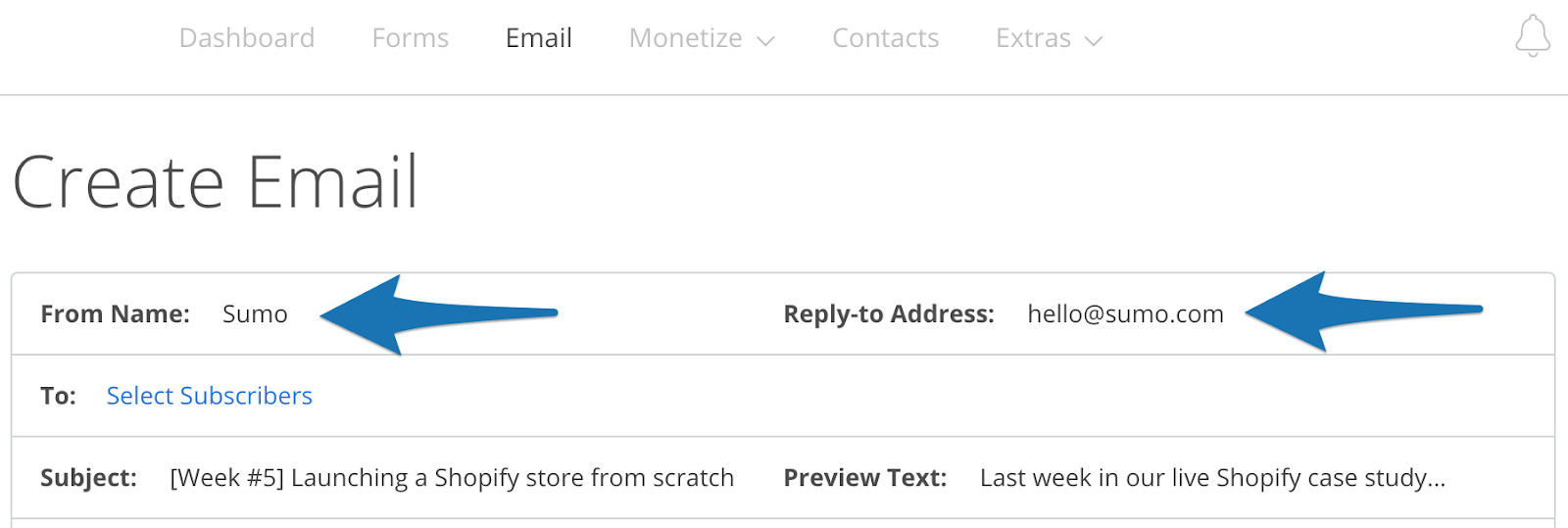
10. You Didn’t Include An “Unsubscribe” Link (Or It’s Broken)
It’s also illegal not to include a way to unsubscribe from your emails.
Virtually every ESP comes with this built-in; here’s what it looks like when sending your emails using the free version of Sumo:
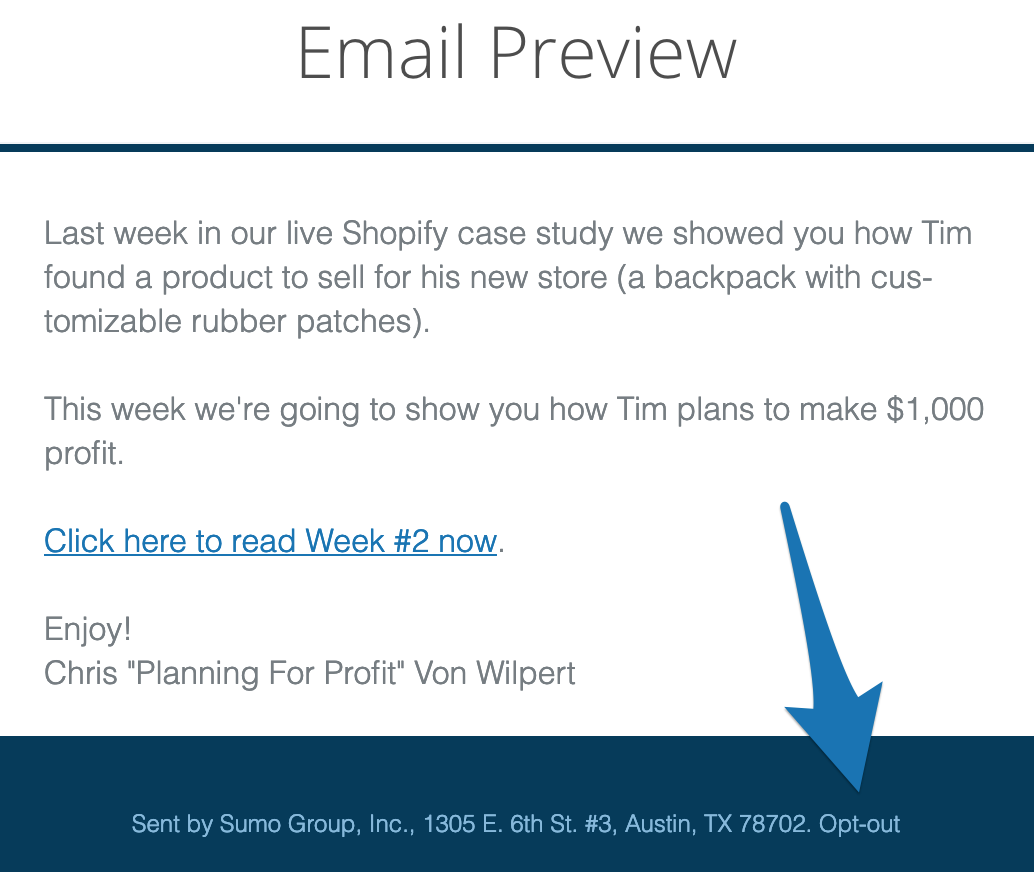
Double-check to make sure yours is both active and working. It’s possible for the link to be broken somehow, and this could cause people to flag you for spam.
Here’s how to check it:
-
Send a test email to a disposable email account you have and click the unsubscribe link. If it’s working, great! If not, log into your ESP account and check your settings.
-
If you can’t figure it out, contact your ESP’s customer service. They should be able to help you set it up correctly.
11. You Made Spelling Or Grammar Errors
Another big red flag for people reading emails and spam filter bots is improper spelling or grammar.
Think about it — if you got an email from someone you’re not familiar with and the subject line was misspelled, would you open it or flag it for spam?
The best solution is to use Sumo, which comes with a free built-in spell checker (that works the same as Google Docs):

You can also install a browser extension like Grammarly to help automate your spell checking if you use another email service provider.

12. You Didn’t Include A Physical Address
Make sure you include your physical address! It’s illegal under the CAN-SPAM Act not to include your business address in your email marketing.
Again, your ESP should give you an address field you can fill out inside your settings and insert it automatically at the bottom of all emails you send, but double-check to make sure. If you’re operating from home and don’t feel comfortable giving out your home address, you can always opt for a PO Box at your local post office. It’s an extra expense, but worth the privacy.
13. You Didn’t Use Smart Copywriting
Good copywriting in your subject line and your email copy can improve both your open rate and your clickthrough rate. But to write great copy, you need a good understanding of your target market.
One way to easily improve your copywriting is by using persuasive wording, such as:
-
Free
-
Sale
-
Imagine
Of course, you don’t want to overdo it (some of these words are spam triggers), but they can improve your open rates. For more help, check out the 5 proven psychological copy triggers.
14. Your Subscribers Didn't Engage With Your Emails
Chances are, once you start growing your email list, people will respond to some of your emails (especially if you ask them to, which I highly recommend!).
If you are lucky enough to get some engagement from your readers, don’t neglect them! By responding to their emails, you’re building a relationship and improving trust with your leads or customers.
This, in turn, improves your open and click rates — which decreases the chance your emails end up in spam! Plus, you’ll get more conversions. It’s a win-win-win, really.
15. You Didn’t Test Your Emails For Spam Before Sending
We already mentioned testing your emails in a spam check tool like mail-tester. But you should also send a test email to your own email account to make sure everything looks right and it doesn’t end up in YOUR spam folder!
Easy last step, right?
Get A Simplified 15-Step Deliverability Checklist
If you went through each of these steps, congrats! You should be spam-free.
However, you shouldn’t go through this once and be done. You should have a checklist to go through every time you send an email to your list.
Don’t worry — we’ve created it! Click the button below to get our 15-step email deliverability checklist to make sure you never end up in another spam filter again.
Get The Deliverability Checklist
Why are your emails going to spam? Because you’re not following a checklist based on best practices.
Add A Comment
VIEW THE COMMENTS